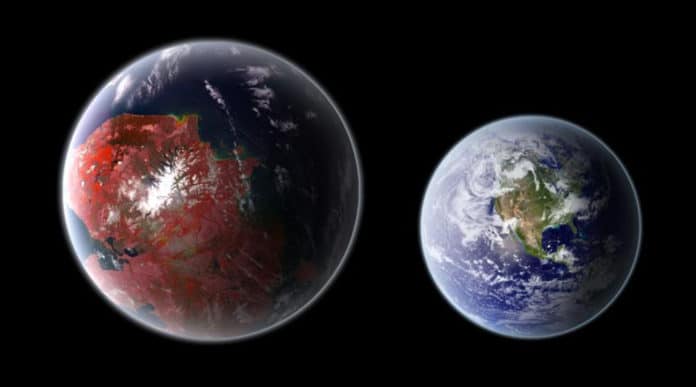To date, scientists have detected several habitable exoplanets. The temperature in these worlds is just right for liquid water to exist on the surface—it is much less common.
Although, according to a new study, none of these exoplanets has the theoretical conditions to sustain an Earth-like biosphere by means of ‘oxygenic’ photosynthesis.
Just one of those planets verges on getting the stellar radiation essential to support a huge biosphere: Kepler−442b, a rocky planet about double the mass of the Earth, circling a reasonably hot star around 1,200 light-years away.
Scientists analyzed how much energy is received by a planet from its host star and whether living organisms would efficiently produce nutrients and molecular oxygen, both essential elements for complex life as we know it, via normal oxygenic photosynthesis.
Scientists then calculated the amount of photosynthetically active radiation (PAR) that a planet receives from its star: they found that stars around half the temperature of our Sun cannot sustain Earth-like biospheres. The reason behind this is the lack of enough energy in the correct wavelength range.
Planets around considerably cooler stars known as red dwarfs, which seethe at approximately a third of our Sun’s temperature, couldn’t get sufficient energy to try and enact photosynthesis. Stars that are hotter than our Sun are much brighter and emanate up to multiple times more radiation in the fundamental reach for compelling photosynthesis than a red dwarf, anyway for the most part, don’t live long enough for complex life to advance.
Prof. Giovanni Covone of the University of Naples, lead author of the study, said, “Since red dwarfs are by far the most common type of star in our galaxy, this result indicates that Earth-like conditions on other planets may be much less common than we might hope.”
“This study puts strong constraints on the parameter space for complex life, so, unfortunately, it appears that the “sweet spot” for hosting a rich Earth-like biosphere is not so wide.”
Journal Reference:
- Giovanni Covone et al., Efficiency of the oxygenic photosynthesis on Earth-like planets in the habitable zone, Monthly Notices of the Royal Astronomical Society (2021). DOI: 10.1093/mnras/stab1357
